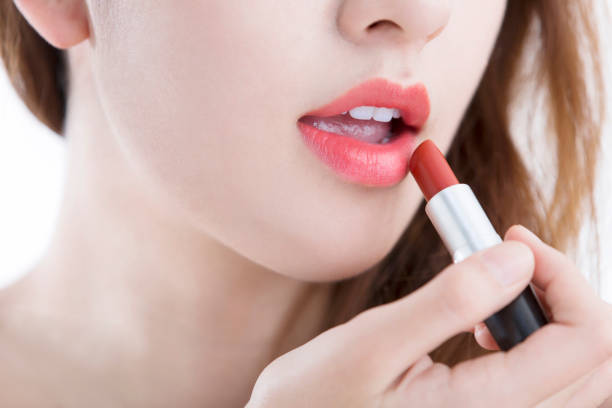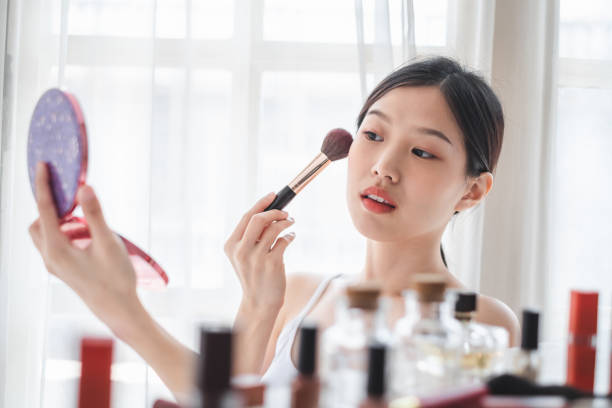Chinese traditional makeup has evolved greatly over the years and is still in use today. One of the most fascinating aspects of Chinese cosmetics is the ươmen, a makeup method that has been utilized by Chinese ladies for over a millennium. In addition to being exquisite, this makeup look has cultural importance. In this blog post, we shall go inside the world of men and examine its relevance, history, and methods. We will also go over some of the main characteristics of this makeup look, such as its utilization of symbolic meanings, elaborate designs, and natural components. This post will show you the beauty of traditional Chinese makeup and give you a newfound respect for this age-old art form, whether you’re a cosmetics fanatic or just curious about Chinese culture.
Introduction to ươmen
ươmen, or traditional Chinese makeup, has a rich and centuries-long history. ̡̰ươmen has captured the hearts of many beauty and cultural fans with its elaborate designs, vivid colors, and symbolic meaning. We explore the history, methods, and cultural significance of traditional Chinese cosmetics as we set out to uncover its beauty.
ươmen were originally worn by noblewomen in the imperial court and date back to the Tang Dynasty. But as time went on, it gained popularity across all social groups and developed into a means of artistic and self-expression. The word “ươmen,” which means “facial patterns” or “decorative patterns,” itself has a poetic quality. Natural colors, including crushed minerals, plant extracts, and even powdered precious stones, carefully used to create these intricate patterns.
The focus placed by ươmen on having a complexion that resembles porcelain is one of their distinguishing characteristics. Pale, faultless skin seen as the pinnacle of beauty and represented nobility and purity. Women would mix rice powder, white lead, and even pearl powder to make a smooth, luminous base to get the desired effect.
The elaborate patterns and hues used to embellish the face are another distinctive feature of ̰̥men. These patterns frequently inspired by natural phenomena, with symbols such as flowers, birds, and butterflies signifying a variety of values and goals. For example, the phoenix signified auspiciousness and feminine charm, while the peony, dubbed the “king of flowers,” denoted prosperity and elegance.
Understanding the history and significance of ươmen in Chinese culture
To fully appreciate and uncover the beauty of traditional Chinese cosmetics, one must comprehend the background and meaning of ̡̰ươmen in Chinese culture. The intriguing and complex art technique known as “painted face,” or ươmen, has practiced for generations in China.
ươmen have employed by Chinese opera artists since the Tang Dynasty to represent various characters and emotions on stage. The use of makeup is essential to the narrative since it aids in the audience’s comprehension of the personalities and roles of the characters. Every hue and pattern had a symbolic meaning that stood for moral qualities, feelings, and social standing.
Outside of the theater, ươmen gained popularity over time among the noble and aristocratic women of ancient China. It was considered a way to draw attention to the characteristics connected to traditional Chinese ideas of femininity and to enhance beauty. ̰̥ươmen art encompassed not just the face but also the neck, chest, and even the arms, resulting in a cohesive and melodious aesthetic.
Exploring the techniques and tools used in traditional Chinese makeup application
Discovering the methods and implements employed in traditional Chinese makeup application is like entering a realm of age-old beauty secrets. The art of traditional Chinese makeup, or ̡̰ươmen, has a rich history and culture. A deeper appreciation of its beauty can gained by learning about its methods and supplies.
The skill of getting a perfect complexion is one of the main components of traditional Chinese makeup application. This accomplished by using a variety of equipment, such as a brush made of soft goat hair or a silk powder puff. To achieve a flawless finish, use the brush to carefully mix and buff the foundation or powder after softly pressing the powder puff against the skin to distribute it evenly.
The emphasis on accentuating the eyes is another intriguing ancient Chinese cosmetic method. This accomplished by applying complex eyeliner methods, including the well-known cat-eye in the Ming style or the deft double-winged eyeliner. Fine-tipped brushes and bamboo pens among the equipment used for applying eyeliner, enabling precise and detailed designs that highlight the natural beauty of the eyes.
Another crucial component of traditional Chinese cosmetics is lip color. It’s customary to employ strong, vivid hues, such as reds and corals, to produce a dramatic contrast with the pale face. The traditional Chinese lip brushes constructed of soft bristles and frequently have beautiful motifs engraved on the handle. These brushes used to apply lip color precisely and elegantly.
The importance of preserving and promoting traditional Chinese makeup practices

The beauty of the art form is only one reason to preserve and promote ancient Chinese makeup techniques; another is to commemorate and celebrate China’s rich cultural legacy. The Chinese people’s ideals and traditions are reflected in each method and style that has been passed down through the years.
By maintaining traditional Chinese cosmetics, we make sure that these antiquated methods and wisdom don’t disappear over time. It is a means of honoring the ancestors who created and refined these customs as well as the artists and craftspeople who devoted their entire lives to becoming experts in the field of Chinese cosmetics.
Encouraging traditional Chinese cosmetics is another way to promote awareness and appreciation of different cultures. People from all backgrounds can learn about the meaning and symbolism of each makeup style through education and awareness. Traditional Chinese makeup is a visual depiction of Chinese culture and history, from the minute intricacies of the ươmen makeup to the symbolic meaning of particular colors and patterns.
Conclusion
In summary, appreciating the classic beauty of ươmen is a chance to honor the rich cultural legacy of traditional Chinese cosmetics. The elaborate techniques, vivid colors, and profound meaning that have been passed down through the generations have become evident on this voyage into the world of ̨̥ươmen.
Enhancing physical attractiveness is not the only purpose of traditional Chinese cosmetics; it is a type of art that represents the history, values, and beliefs of the Chinese people. ̡̰ươmen is a remarkably distinctive and alluring beauty technique, owing to its utilization of natural substances and meticulous application technique.
We may honor the traditions and conventions that have defined Chinese culture by adding ̨̡men to our beauty routines. We can honor the beauty of ̡̰men genuinely and respectfully, whether it’s by donning a striking red lip inspired by the color’s auspiciousness or adorning our eyes with beautiful floral patterns reminiscent of traditional Chinese art.
